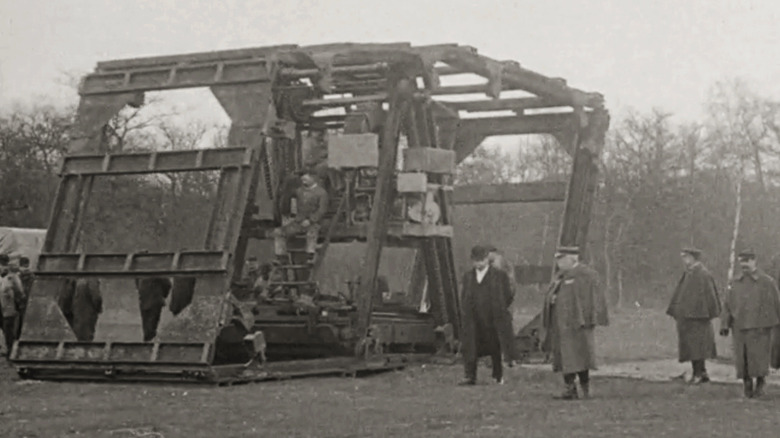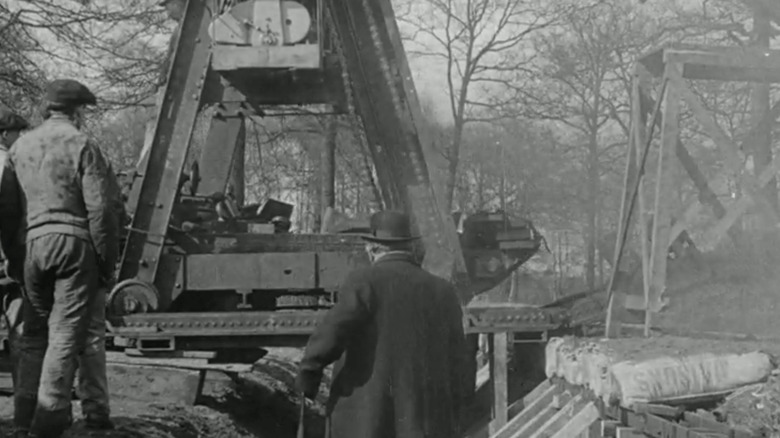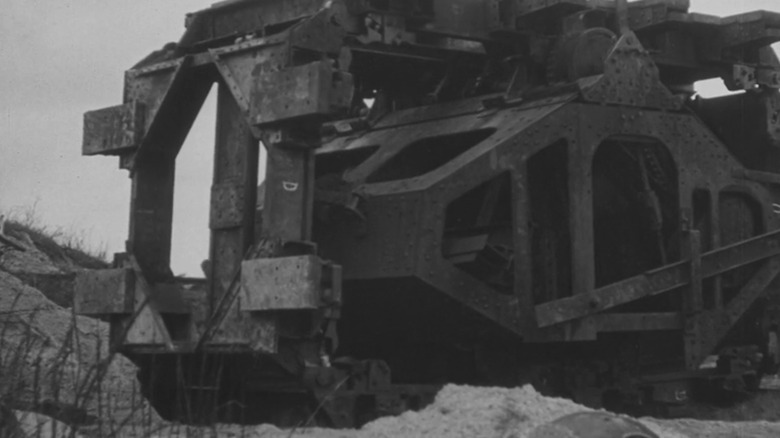One Giant Tread: The History Behind The French Boirault Machine Tank
In 1914, during the start of World War 1, French engineer Louis Boirault created one of the strangest-looking military vehicles of all time with the invention of the Boirault Machine. This bizarre creation was in direct response to the rise of trench warfare during the First World War. For the first time, troops had to deal with artillery and fully automatic weapons capable of firing 450 to 600 rounds per minute.
Forces began to dig trenches to protect themselves from the constant bombardment of artillery and machine gun fire. This defensive method had the unintended effect of creating a nightmarish expanse of no man's land between both military lines, often strewn with layers of barbed wire fence that would stop the enemy from advancing. French forces needed a solution as this tactic proved highly effective, as often soldiers would get tangled up in the barbed wire when attempting to advance.
Ultimately, while the Boirault Machine was theoretically functional at tamping down barbed wire to make way for military forces, there was so much wrong with the design that it was never commissioned in combat. Instead, armies worldwide would opt for designs more reminiscent of modern-day tanks, which also had mixed efficacy in dealing with barbed wire.
What was the Boirault Machine?
In December 1914, Louis Boirault and his team of engineers drafted designs for an innovative new military vehicle capable of being deployed that could eliminate the obstacle that barbed wire created. Working for the French War Ministry led by the Minister for Public Instruction and Inventions, Paul Painleve, Boirault, and his engineers began constructing the inventive design.
The Boirault Machine would utilize two tracks modeled after train tracks, with parallel rails attached horizontally by steel girders. These pieces would fit together to form 6 steel frames that would act as the track itself and create the appearance of one giant self-propelled track, with the driver sitting in the center of the machine. The vehicle's momentum was powered by an engine that moved steel chains that propelled the frames forward in unison.
The heavy machine would then roll over the barbed wire fence, pushing large sections down quickly, allowing the advancement of infantry forces and light military vehicles behind it. While the concept of a track-powered machine certainly would make its way to military warfare later, the first design for the Boirault Machine was anything but perfect.
What was wrong with the Boirault Machine?
Though the design for the Boirault Machine was innovative and would go on to inspire tank design, the original iteration, powered by a petrol engine, was only capable of moving a paltry 1 mile per hour and lacked any sort of turning. This lack of speed and mobility made it a sitting duck and rendered it useless in realistic applications. Even worse was the notion that the vehicle's operators would be left completely vulnerable to enemy fire as they approached enemy lines at a slow rate of speed.
In addition, while the hulking mass of the 30-ton behemoth machine certainly enabled it to crush barbed wire, the amount of steel required to construct the design was far too much, especially in a time of scarcity. Though trials proved effective against barbed wire fences, the design was insufficient for real-world application. Regardless, Boirault pushed on with his idea, as the initial prototype for the machine would not be the last iteration of its design.
The Boirault Machine was improved but eventually scrapped
A subsequent design would be tried again in 1915 due to the lack of armored vehicle options for the French military at the time, something that would be remedied with the Schneider, the first French tank used in 1917. However, once again, the design for the Boirault Machine would prove inadequate, though this time, Boirault did add 45-degree turning functionality, something vacant from the first prototype. The same problems that plagued the first design were still present in its follow-up, as the vehicle moved entirely too slowly and took too many resources to manufacture.
Later, Boirlault would again improve upon the design one last time, adding a more secure steel cabin that could protect the crew from gunfire and had a larger turning radius than previous models. The vehicle still utilized the same concepts as the first model but could be more viable on the battlefield because it actually protected the machine's operators.
Ultimately, however, none of these improvements were good enough for the invention to be deployed, and the vehicle would be nicknamed "Diplodocus Militarus," named after a large, sluggish dinosaur. Later, tools like the Bangalore Torpedo, a subterranean explosive that could blow up the barbed wire, would go on to be used to clear the dangerous obstruction during World War 2.


